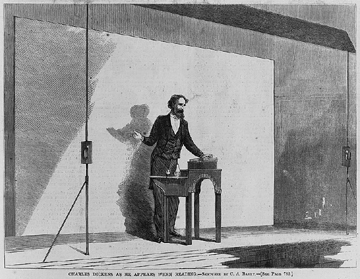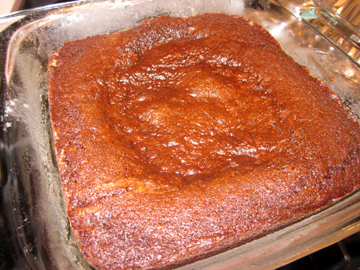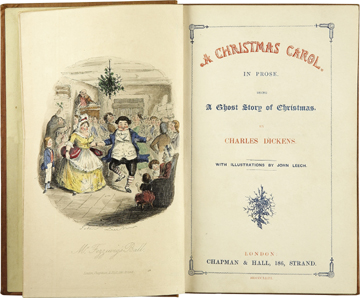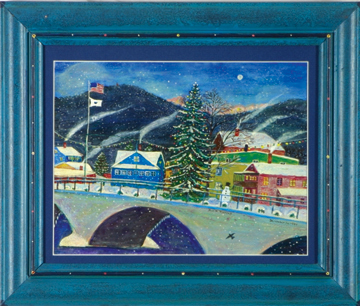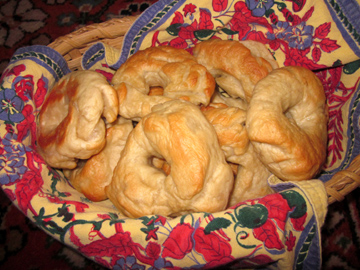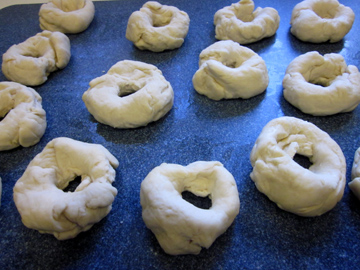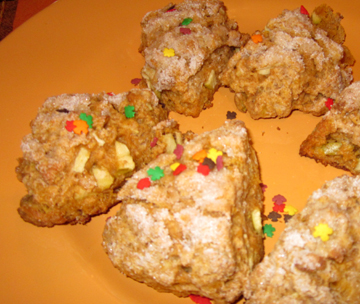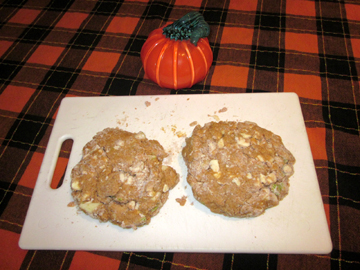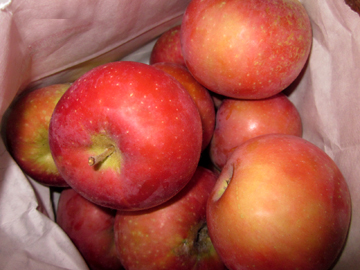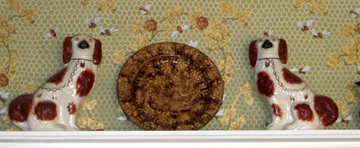
The Staffordshire dogs ADORE their new background.
Wallpaper is not in fashion.
When we were readying my mother’s New Jersey house for sale, Wendy the Realtor gazed at the wallpaper with barely concealed dismay, clearly longing for subtly painted walls. She was much too nice to say anything—but the look in her eyes was unmistakable.
A November article in the Washington Post titled “How to Keep Your House from Looking Old, Neglected” was more blunt:
Wallpaper has got to go—with very few exceptions, according to Lynn Chevalier, owner of Staged Right, a McLean firm that dresses up homes for market. “I always say people should take down wallpaper unless it’s very subtle,” she said.
I disagree—and I scoff at fashion.
Some call wallpaper old fashioned. I say “old fashioned” is just another term for “classic.”
Wallpaper has many virtues.
First, it lasts far longer than a paint job. I have visited older homes where one could still see wallpaper that was put up a century ago. Some might shudder at this longevity, but I savor the connection with the past.
Wallpaper makes an immediate statement. At its best it is like art, revealing something about both its creator and its owner.
Wallpaper can define a room simply and completely. Definition is what we were looking for in the dining room in our new apartment in Virginia.
The dining room is really just a section of the living room. It does have three walls–two and a half, really–but it flows right into the living room as apartment dining rooms often do.
My task when looking for wallpaper was to find something that would make this room stand out from the rest of the apartment. I also wanted to find a pattern that would complement the China and tschotchkes we planned to place on a plate rail on the dining-room walls.
It was not an easy task.
I hadn’t purchased wallpaper in ten years. Last time I was looking for it, I encountered many choices. My mother’s New Jersey home had an excellent paint and wallpaper shop nearby, and we had a good-sized wallpaper outlet not far from my home in western Massachusetts.
This time around finding wallpaper was quite different. Having sold the house in New Jersey, we couldn’t go to the wallpaper store there. And the outlet in Massachusetts no longer existed, I discovered.
I called its parent company, which now sells only fabric. “Nobody buys wallpaper anymore,” the operator informed me.
I guess I’m nobody.
I asked around Alexandria, Virginia, thinking historic Old Town would surely have a wallpaper store. It didn’t. A couple of local paint stores offered a meager selection of wallpaper books.
Next, I tried the internet.
Buying wallpaper over the internet is disconcerting because one really isn’t sure what the patterns will look like without seeing samples. I ordered sample after sample from a variety of companies without much satisfaction.
Luckily for me, my friend Peter came to the rescue as he often does.
The king of internet window shopping, Peter follows many design-oriented web sites. It helps that he is an architect.
He is not a wallpaper person himself, but he knows my taste.
He sent me a link to J.R. Burrows & Company, a firm in Rockland, Massachusetts, that manufactures historical rugs, wallpapers, and lace curtains.
Here is the first Burrows image Peter showed me:

He knew it wasn’t exactly what I needed for the dining room—but he had a feeling I would fall in love with it. I did.
I called the Burrows Company to request samples and was lucky enough to talk to John Burrows himself.
He was enormously helpful, asking what sort of room I was hoping to paper. (By the time I looked at his prices I knew it would probably be only one room!)
John has studied architectural history and design as well as historic preservation. His firm specializes in recreating designs from the late 1800s and early 1900s.
It was John who suggested I consider his honeybee wallpaper, which I had somehow overlooked while perusing his web site (perhaps because it was really, really expensive). “I’ll pop a sample into your package,” he said.
When it arrived, the honeybee paper took my breath away. It was not at all what I had pictured using, and yet it was just right.
I learned from John’s web site that it had been designed by Candace Wheeler (1827-1923), the “Mother of American Interior Design,” in 1881. It won its creator $1000 in a competition for an artistic American wallpaper.
John informed me that he had spent five days on a ladder tracing the wallpaper from the walls of a library in Ionia, Michigan. As I mentioned earlier, wallpaper can last a LONG time.
He recently installed honeybee wallpaper in the aesthetic movement gallery in the new Art of the Americas wing at Boston’s Museum of Fine Arts.
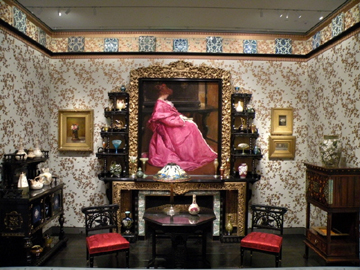
Courtesy of John Burrows
Being a fundamentally cheap person, I contemplated the cost of the wallpaper for quite a while. The honeybee wallpaper was, frankly, five times the price of the next contender, a Waverly print available online from a discount supplier.
It was far more than five times as beautiful, however, and I understood why it was so expensive: historical research; limited, quality print runs; and personal service. (I couldn’t imagine Mr. Waverly–if there was a Mr. Waverly–helping me choose my wallpaper.)
I called John’s associate Christine to order it.
Even then, getting my wallpaper wasn’t easy! Christine informed me that she didn’t have enough of the classic honeybee wallpaper in stock for me. The next printing was due in about a month.
Unfortunately, my wallpaper hanger was due in a couple of weeks.
Christine and John asked whether I would be interested in the silver version of the pattern. The original was printed on a cream background. The silver substituted a silver/green background; John calls the green “sage.”
I said I’d need to see it. They sent an image of the wallpaper.
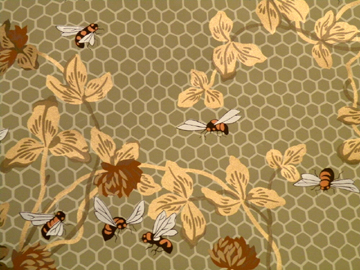
I said I wasn’t sure how it would look with blue-and-white plates—and bless their hearts, John and Christine posed a few blue-and-white plates next to the paper and sent me photos.
To clinch the deal, John informed me that according to Victorian color design blue was exactly the right hue to go next to the sage green; he called it an “analogous” color.
Who was I to argue with Victorian color design? I placed the order.
To say we are pleased is a massive understatement. Our wallpaper installer, Cindy (F.B.I agent by day, paper hanger by night—or rather on the weekends), did a splendid job, and the gold in the wallpaper glows every afternoon when the western light falls upon it.
The photos here don’t do it justice because I can’t get the light quite right, but I hope they give some idea of how lovely this paper is.
To cap off my pleasure, John sent me a photo of the honeybee wallpaper used as a frieze on a wall of the first lady’s dressing room at the White House.
He informed me that Chester A. Arthur hired Candace Wheeler and her business partner, Louis Comfort Tiffany, to decorate the White House in 1881.
The photo below, courtesy of John Burrows, dates from the late 1880s.
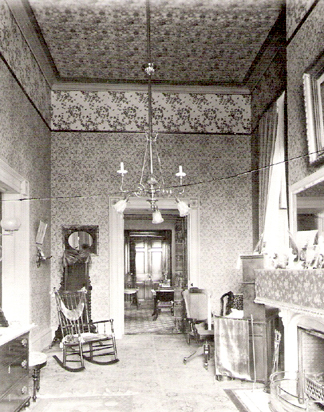
According to John, the first lady’s dressing room is completely different now, containing various rooms including a small family kitchen and elevator. Still, I think Michelle Obama ought to consider reinstating this lovely wallpaper somewhere in her current home.
Meanwhile, I’m never moving out of this apartment. Or if I do, I’m ripping out the dining-room walls and taking them with me.
In case readers were wondering, I DO have a recipe to accompany my defense of wallpaper. John Burrows graciously gave me permission to print the formula for his scones here.
He learned to make them when he was 16. He spent a summer working with Pelham Puppets in Marlborough, Wiltshire (in southwestern England). His landlady’s daughter worked at the local bakery and obtained the recipe.
John likes to prepare his scones in large quantities for events such as a cream tea he has hosted at Vintage Dance Week in Newport, Rhode Island.
I’m not sure I’d want to make 50 dozen of them as he has once or twice—in fact, I cut his recipe for 16 scones in half since I wasn’t serving a large crowd—but they are lovely and flaky. I particularly liked the cheddar version, something I had never tried before.
John suggests serving his sweet scones in the afternoon with Taylors of Harrogate Yorkshire Gold tea, along with lots and lots of whipped cream and strawberry jam. They’re actually pretty tasty at any time of day.
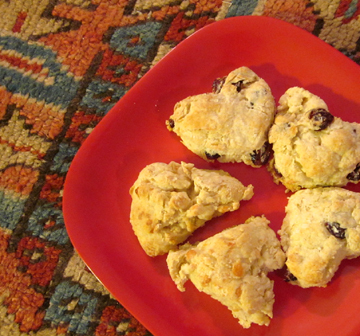
Ingredients:
if you are making sweet scones:
2 cups flour
1 teaspoon cream of tartar
1/2 teaspoon bicarbonate of soda (a.k.a. baking soda)
1/4 teaspoon salt
1/4 cup (1/2 stick) cold sweet butter
3 tablespoons sugar (John says “1/8 cup plus”)
3/8 cup raisins (John says “1/4 cup plus; the original recipe called for sultanas, and he tends to use golden raisins; I couldn’t find raisins in my pantry and it was snowing so I substituted dried cranberries)
3/4 cup buttermilk
if you are making savory scones:
2 cups flour
1 teaspoon cream of tartar
1/2 teaspoon bicarbonate of soda (a.k.a. baking soda)
1/4 teaspoon salt
1/2 teaspoon dry mustard
freshly ground pepper to taste
1/4 cup (1/2 stick) cold sweet butter
1/4 pound sharp cheddar cheese
3/4 cup buttermilk
Instructions:
Preheat the oven to 450 degrees for the sweet scones; 400 degrees for the savory. Line a jelly-roll pan with a silicone mat.
In a medium bowl whisk together the dry ingredients. Using your fingers, quickly rub in the butter until it is fairly well distributed. Stir in the sugar and raisins (for the sweet scones) or the grated cheese (for the savory), followed by the buttermilk.
Roll or pat the scones onto a lightly floured board. The sweet-scone dough should be about 1/2 inch thick; the savory, about 3/4 inch.
Cut the sweet scones into rounds with a fluted cutter. (I didn’t have one so I used heart-shaped cookie cutters.) Cut the savory scones into triangles.
Bake the sweet scones for 10 to 15 minutes; the savory, for 15 to 20 minutes.
John usually makes 8 scones with this recipe; I cut them a little smaller and came up with 12. He adds that tiny cheddar triangles make a lovely appetizer.
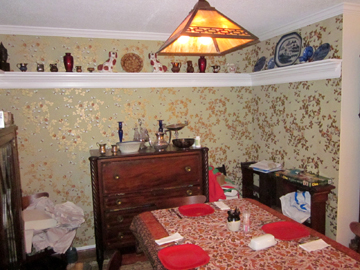
As you can see, we're still unpacking--and we haven't put up any pictures yet--but this room is going to be fabulous when we finish putting away the mess!
If you’re curious about another room in our apartment, visit today’s post on this blog’s sister, Pulling Taffy.







